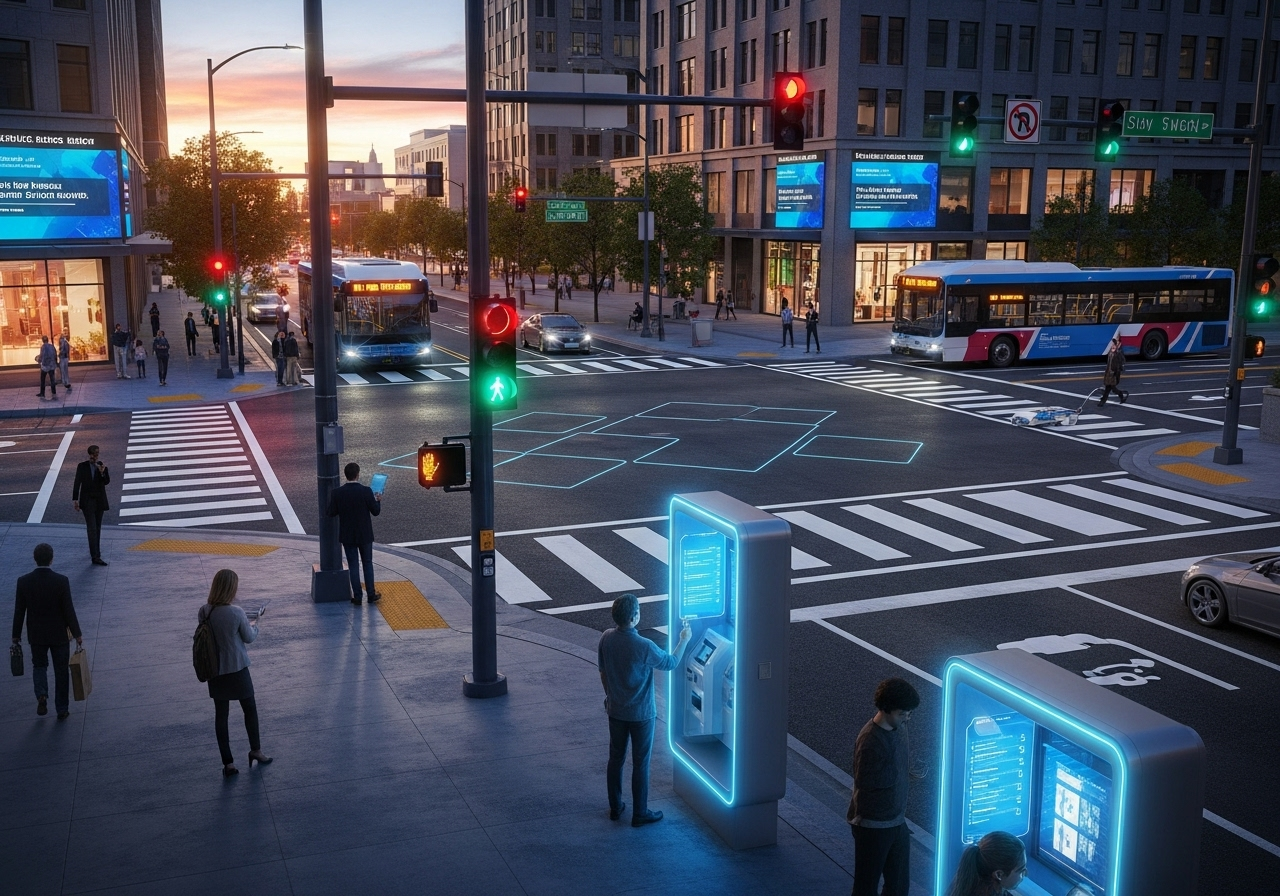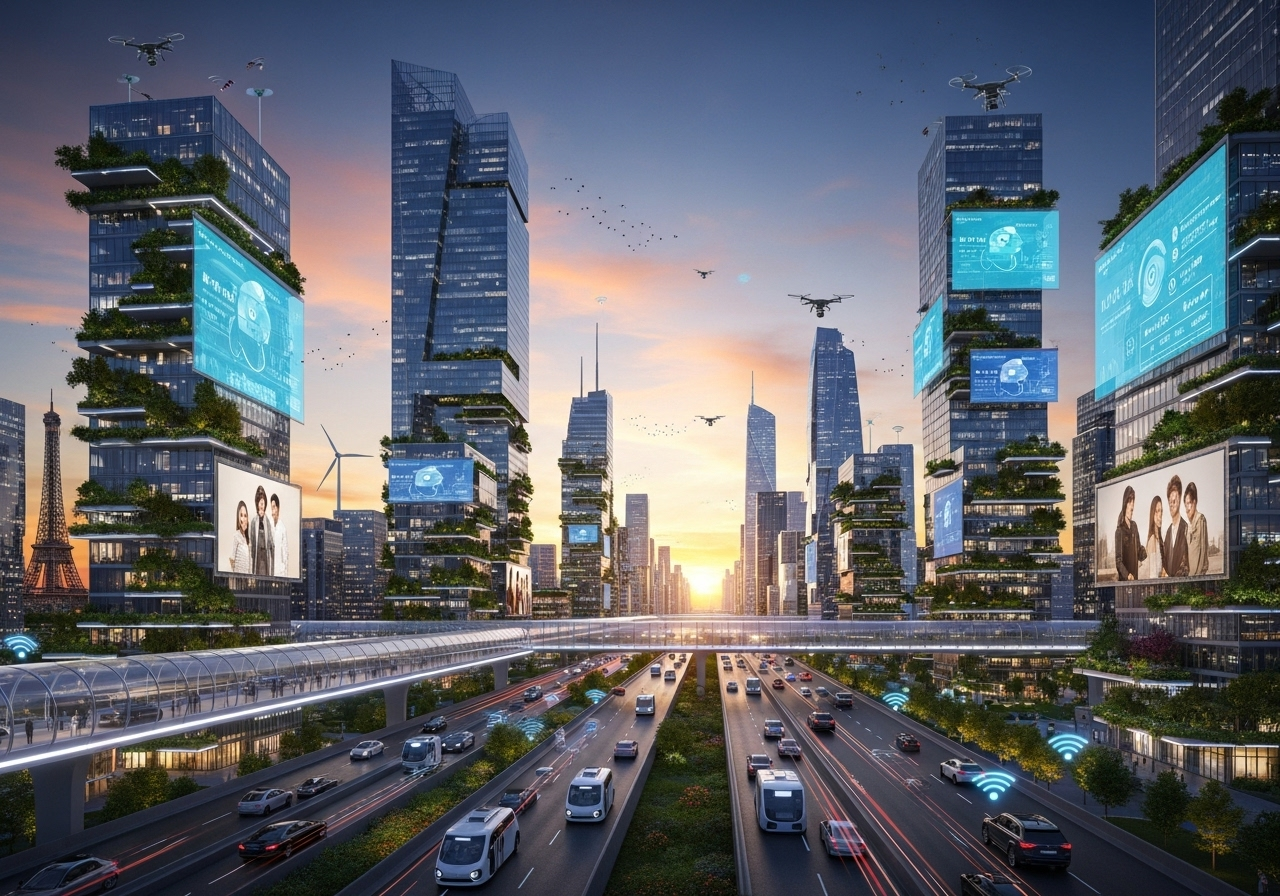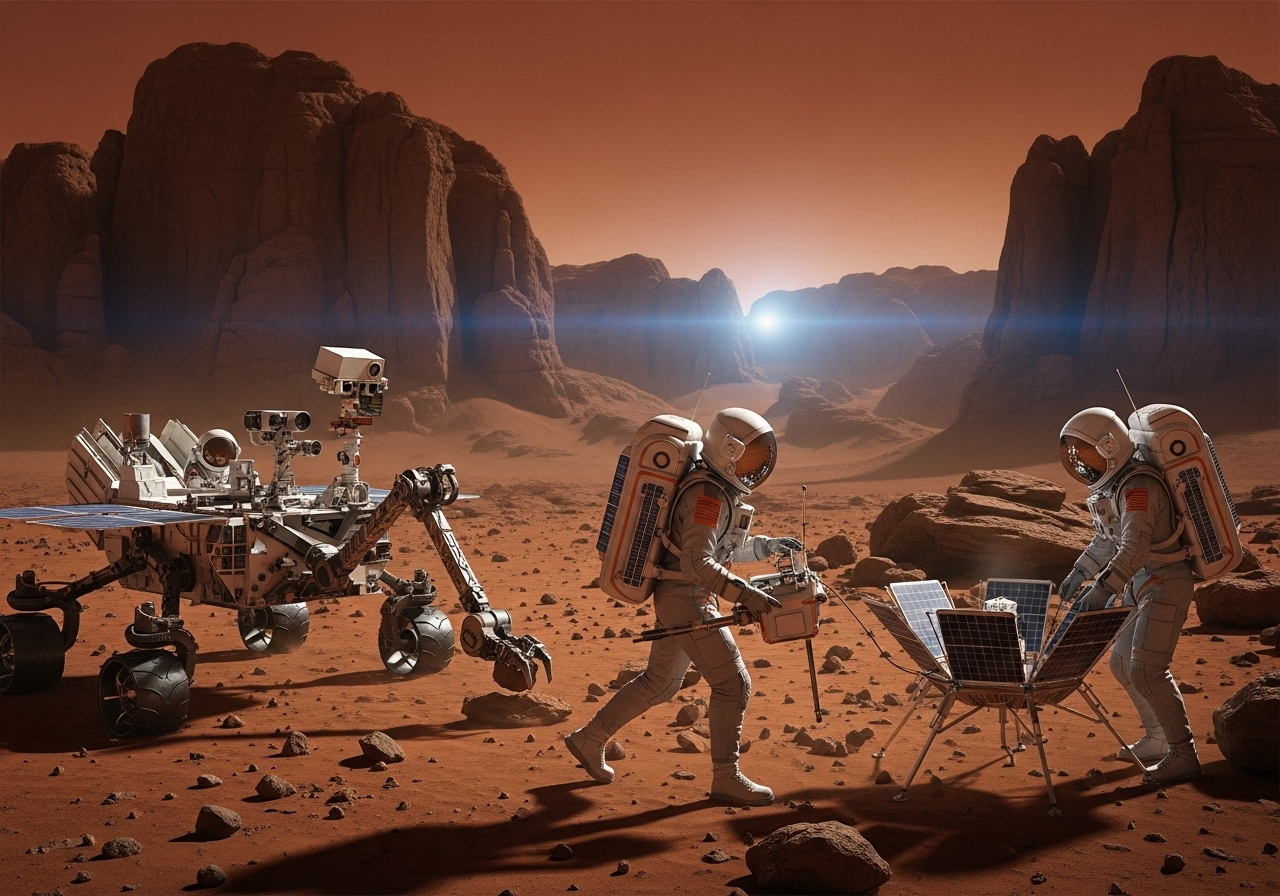Smart Cities in 2026: How Technology Is Shaping Urban Living
Harrison Green
2025-09-09
6 min read

Urban centers across the globe are experiencing a technological renaissance that is fundamentally transforming how millions of people live, work, and interact with their environments. As we navigate through 2026, smart city initiatives have evolved from experimental pilot programs to comprehensive urban management systems that touch nearly every aspect of metropolitan life. The integration of artificial intelligence, Internet of Things devices, and advanced data analytics has created urban ecosystems that are more responsive, efficient, and sustainable than ever before.
The Connected Infrastructure Revolution
The foundation of today's smart cities lies in their interconnected infrastructure networks that create seamless communication between various urban systems. Sensors embedded throughout city streets, buildings, and public spaces continuously collect data about everything from air quality and noise levels to pedestrian traffic patterns and energy consumption. This constant stream of information feeds into centralized management platforms that can make real-time adjustments to optimize city operations. Traffic management systems exemplify this connected approach beautifully. Smart traffic lights now adjust their timing based on actual traffic flow rather than predetermined schedules, reducing congestion and emissions while improving commute times. These systems can communicate with emergency vehicles to create clear pathways during critical situations, demonstrating how technology serves both efficiency and public safety simultaneously. Public utilities have undergone similar transformations through smart grid technology. Water distribution systems now monitor pressure and quality throughout the network, detecting leaks and contamination issues before they become major problems. Electric grids can automatically reroute power during outages and balance supply with demand in real-time, significantly reducing service interruptions while supporting renewable energy integration.
Transportation Gets Smarter
The transportation landscape in 2026 represents perhaps the most visible aspect of smart city evolution. Integrated mobility platforms allow residents to plan, book, and pay for multiple transportation modes through single applications. Whether someone needs to combine subway travel with bike-sharing or coordinate ride-sharing with public transit, these platforms optimize routes and costs while reducing the complexity of urban navigation. Autonomous vehicle integration has progressed significantly, with dedicated lanes and communication systems supporting self-driving cars, buses, and delivery vehicles in many metropolitan areas. These vehicles communicate with traffic infrastructure and each other to maintain optimal spacing and speeds, reducing accidents while improving traffic flow. Public transportation has particularly benefited from automation, with self-driving buses following precise schedules and routes while providing real-time updates to passengers. Electric vehicle charging infrastructure has expanded dramatically, with smart charging stations that can communicate with the power grid to optimize charging times based on electricity demand and renewable energy availability. This coordination helps prevent grid overload while ensuring vehicles are charged when needed most.

Environmental Intelligence and Sustainability
Environmental monitoring and management represent areas where smart city technology delivers immediate, measurable benefits. Air quality sensors throughout urban areas provide real-time data that helps city officials implement targeted interventions during pollution events. These systems can automatically adjust traffic patterns, temporarily reduce industrial emissions, or activate air filtration systems in public buildings when air quality drops below acceptable levels. Energy management has become increasingly sophisticated through building automation systems that learn from occupancy patterns and weather forecasts to optimize heating, cooling, and lighting. Smart buildings can participate in demand response programs, automatically reducing energy consumption during peak periods while maintaining comfortable conditions for occupants. This coordination between individual buildings and the broader energy grid helps cities reduce their carbon footprint while maintaining reliable power supplies. Waste management systems now use sensors to monitor fill levels in collection bins and optimize collection routes accordingly. This approach reduces unnecessary collection trips while preventing overflow situations that create public health concerns. Some cities have implemented pneumatic waste collection systems that transport refuse through underground tubes, eliminating the need for collection trucks in dense urban areas.
Public Safety and Emergency Response
Technology has revolutionized how cities approach public safety and emergency management. Predictive policing algorithms analyze historical crime data, social media trends, and environmental factors to help law enforcement agencies deploy resources more effectively. Video analytics systems can automatically detect unusual behavior or potential safety hazards, alerting security personnel to situations that require attention. Emergency response coordination has improved dramatically through integrated communication systems that connect police, fire, medical, and other emergency services. When incidents occur, these systems can automatically dispatch appropriate resources while providing real-time information about traffic conditions, hospital capacity, and available equipment. Social media monitoring helps emergency managers understand public concerns and distribute accurate information during crisis situations. Disaster preparedness has advanced through sophisticated modeling systems that can predict the impacts of natural disasters and recommend evacuation routes or shelter locations. These systems consider factors like building vulnerability, population density, and transportation capacity to develop comprehensive emergency response plans that can be activated quickly when needed.
Citizen Engagement and Digital Democracy
Perhaps one of the most promising aspects of smart city development is how technology enables greater citizen participation in urban governance. Digital platforms allow residents to report problems, suggest improvements, and participate in decision-making processes more easily than traditional methods permitted. Mobile applications enable citizens to report potholes, broken streetlights, or other infrastructure issues directly to relevant city departments, often with automatic location tracking and photo documentation. Participatory budgeting platforms allow communities to propose and vote on how portions of city budgets should be allocated, bringing democratic decision-making to the neighborhood level. These systems provide transparent tracking of project progress and spending, helping build trust between citizens and government officials. Data transparency initiatives give residents access to information about city operations, from budget allocations to air quality measurements. Open data platforms allow entrepreneurs and researchers to develop applications and analyses that benefit the broader community, creating ecosystems of innovation around civic data.
Looking Forward
The smart city revolution of 2026 demonstrates that technology's greatest value lies not in individual innovations but in creating integrated systems that enhance urban life holistically. As these systems mature and expand, cities are becoming more livable, sustainable, and responsive to citizen needs. The success of these initiatives depends on continued collaboration between government, private sector, and citizens to ensure that technological advancement serves the broader goal of improving quality of life for all urban residents.



